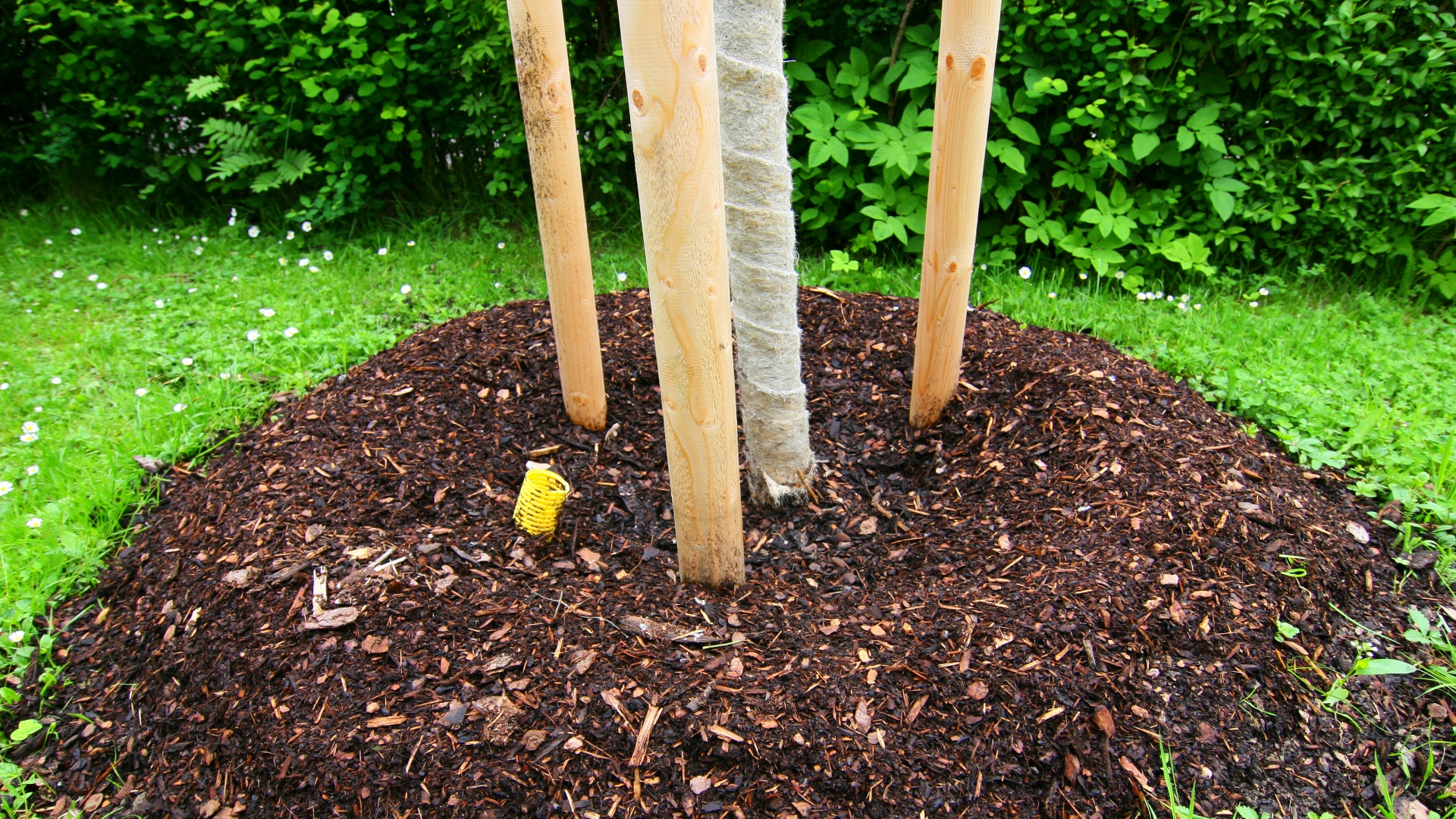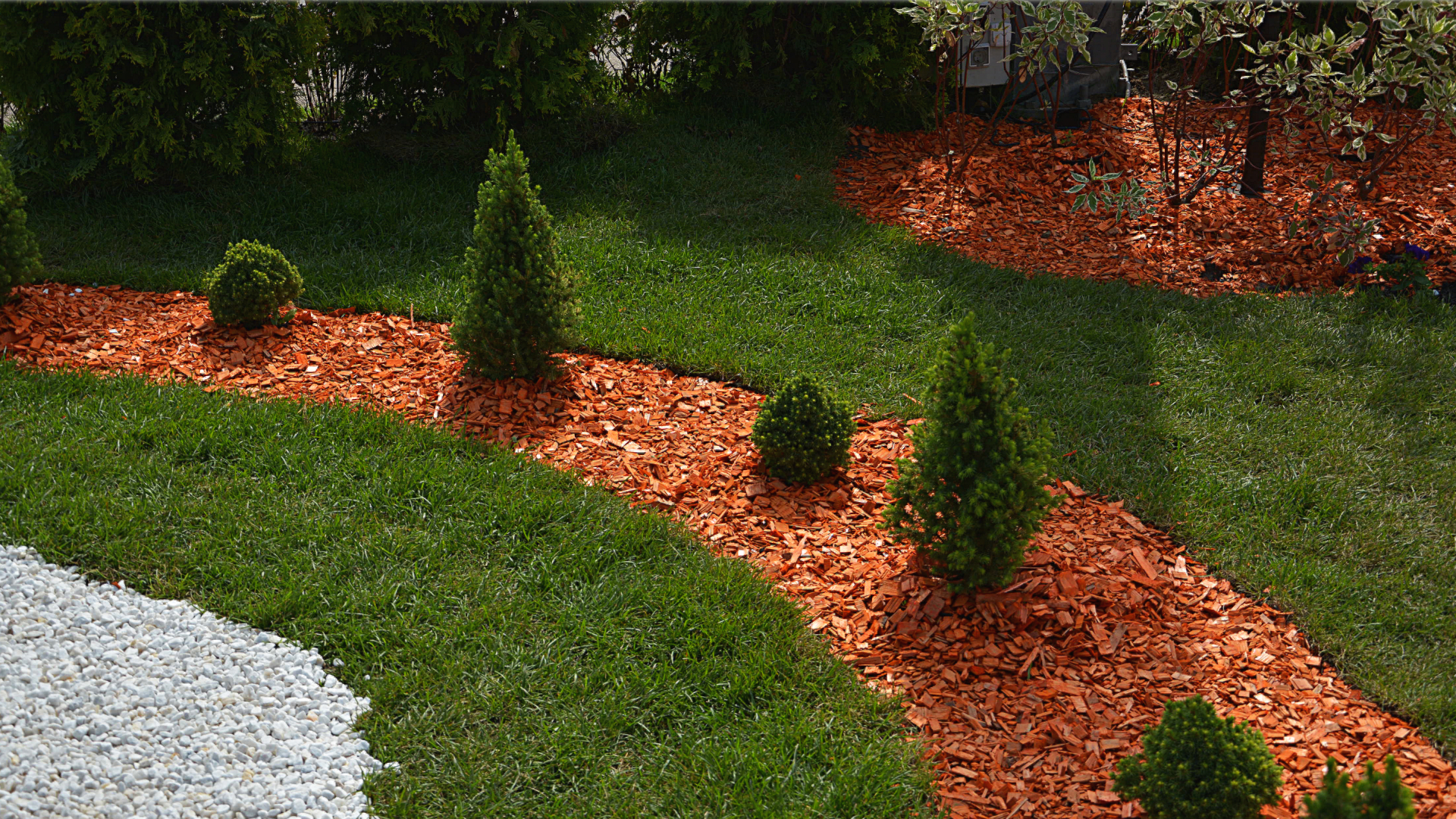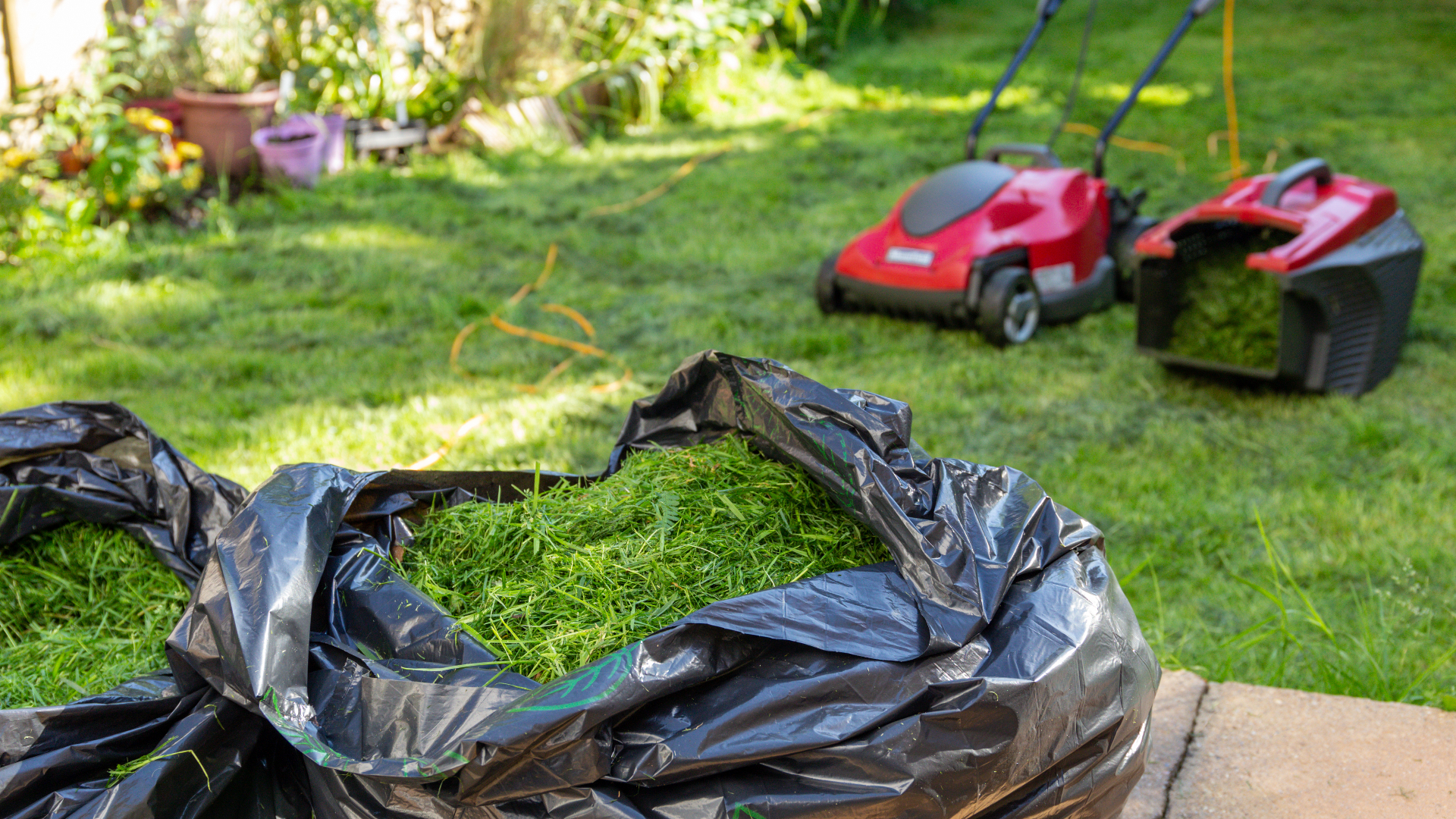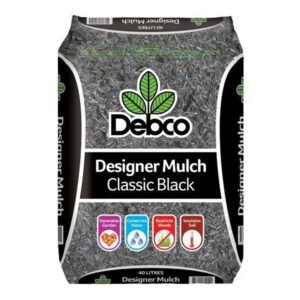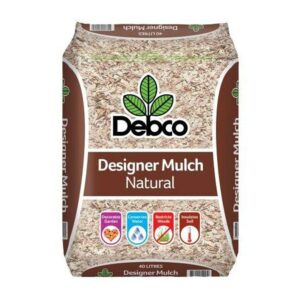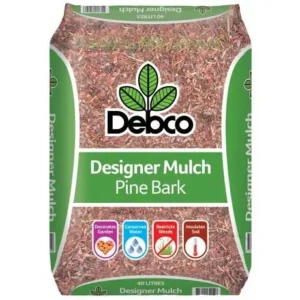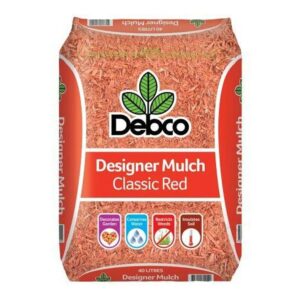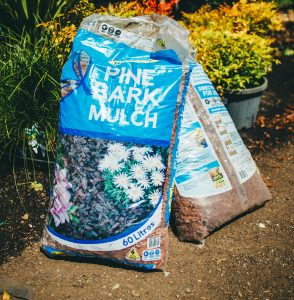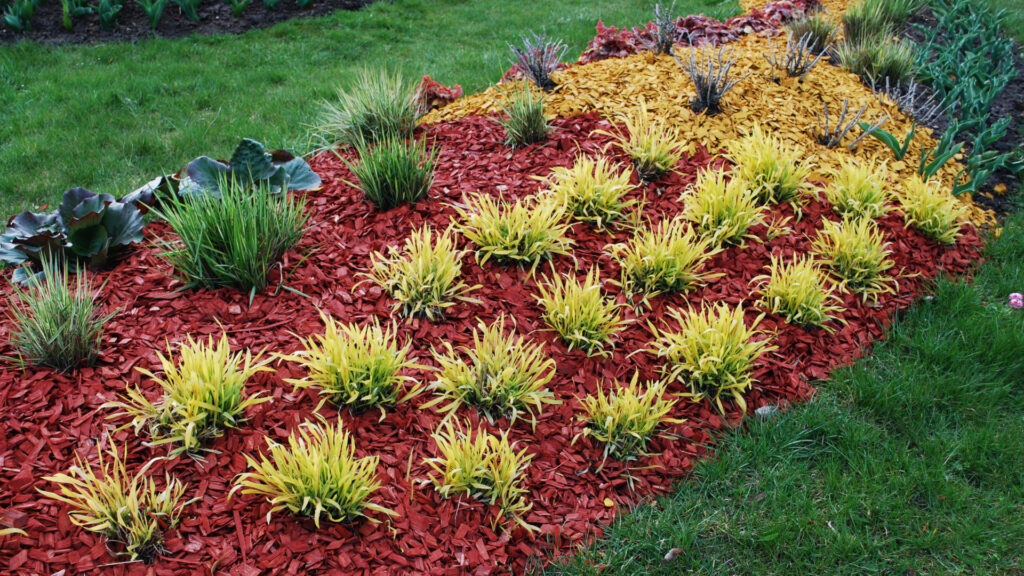
You may hear gardeners talking about mulching their garden but are unsure what they are talking about. Basically this is adding a layer of organic matter to the top of the soil of your garden or around the base of trees. Mulching is often completed twice a year during the autumn and spring and is done for a variety of reasons. Needless to say it is a must for a happy, healthy and beautiful garden.
What is Mulch?
Mulch is an organic material such as pine bark, straw, wood chips or leaves. Different types of mulch have different uses and their own pros and cons. Ground cover mulches are those with a coarse grit and have no fine particles. Soil conditioner mulches are those that are mixed into the soil and are not left on top of the soil. If used incorrectly they can cause disease and weeds to spread.
Benefits of Mulching
There is a variety of reasons to add mulch to the garden.
- Weed suppression – a thick layer of mulch such as pine bark or bush mulch can keep weeds at bay or weaken them, making them easier to remove.
- Moisture retention – mulches protect the soil from water evaporation and drying out, particularly in the summer.
- Fertility – mulches such as Pea straw and Lucerne are added to vegetable gardens to not only retain moisture and suppress weeds but to also intentionally break down and add nutrients to the soil. Any mulch will generally break down over time and add nutrients to your soil.
- Aesthetics – mulch adds the finishing touch to your garden. Black pine bark or bush mulch covers uneven or unsightly spots in the garden and creates an even backdrop for your plants to really shine against.
Nitrogen Drawdown
A common issue when mulching is that the mulch applied to the soil is too fresh and needs to breakdown. In the process of breaking down mulch, fungi, micro-organisms and bacteria compost the material. To do this they use a vital nutrient for plant growth – nitrogen. If they can’t obtain it from the mulch they will obtain it from the surface of the soil, stealing it from the plants. This is called Nitrogen Drawdown and can kill the plant!
Mulches such as woodchips and sawdust can cause Nitrogen Drawdown. These mulches are best used around deep rooted plants such as trees and large shrubs that won’t be affected by this process. When the little organisms have finished their process, the broken down material gradually releases beneficial nutrients back into the soil and will subsequently feed the plants.
To avoid Nitrogen Drawdown you can add a nitrogen rich layer, such as cow manure, in between the mulch and the surface of the soil. The bacteria and fungi will access this nitrogen instead of the soil nutrients, relieving the plant from the possibility of nutrient theft! Otherwise allow your mulch to age for 3 to 6 months.
Volcano Mulching
A term not often heard but often seen. Volcano mulching is where mulch is annually piled up around the base of a tree to prevent weeds and separate tree from lawn. This piled mulch is often heaped up against the trunk. Unfortunately this is not good practice for the tree!
The issues Volcano Mulching can cause are:
- Improper root flare – trees require strong roots to stabilize themselves against strong winds and wild weather. To do this they must grow out and down. Too much mulch can cause them to stay near the surface near the moist mulch instead of growing outward and downwards to search for water thus becoming stronger.
- Disease & Decay – piled mulch against the trunk provides a lovely, moist environment for bacteria and fungi to grow, which can then start to eat away at your poor tree.
To avoid these issues simply keep the mulch away from the trunk.
For young trees, spread the mulch to the dripline (this is where the branches or canopy of the tree currently spread to) and be sure to keep it no thicker than 10cm.
For older trees there’s nifty rule to help you remember. This is the 3-3-3 rule.
Mulch is to only be 3 inches thick, kept 3 inches away from the base of the tree and spread in a 3-foot wide donut shape. Easy!
Types of mulch
There are two types of mulch – organic and inorganic.
- Organic mulches are those that are made from plant materials such as pine bark, wood chips, straw and leaves.
- Inorganic mulches are man-made. Weed mat, plastic and geotextiles. These will often not break down and often don’t have to be replaced. However it does not mean they are low to no maintenance. In many instances weeds and grasses will grow over weed mat and make it next to impossible to remove it later! We suggest to avoid weed mat for gardens and only use on paths.
There are many mulches available on the market but not all of them will be right for your garden. Some may not fit the visual appeal you’re after, others won’t be adding the right nutrients, some may even be toxic to your plants! Below is a list of ground cover mulches and soil conditioner mulches available on the market.
Soil Conditioner Mulches
These are added to soil in order to break down and add nutrients. If left as a ground cover mulch they can invite pests and disease. These mulches are encouraged to break down rapidly.
Pea Straw
Used in vegetable gardens. Pea straw is pea plants dried and baled as a straw. Peas, being a legume, are high in nitrogen and are often used to add nitrogen to the garden. It is not uncommon to get little pea plants growing after the addition of pea straw. This can either be a pro or a con.
Pros – adds nitrogen, retains moisture, ideal for no dig gardens.
Cons – can hide pests such as slugs and snails, if it doesn’t break down rapidly it can invite fungal disease
Ground Cover Mulch
These mulches are for creating a thick covering layer on top of the soil and break down slowly. Ground cover mulches are used for visual appeal as well as weed suppression. They have a thick or coarse grit with no fine particles. They will also have a higher chance of Nitrogen Draw Down.
Pine Bark
These can come in a variety of colours for aesthetic appeal. We have them available in Black, Red and Natural colours. Pine Bark is naturally acidic and will gradually break down over 6 months, needing a re-application twice a year.
Pros – aesthetically pleasing, range of colours
Cons – Can use up nitrogen, continual usage can change he pH of the soil to acidic (not always a bad problem)
Bush Mulch
Easily obtained, particularly in rural areas where arborists are aplenty! Often made up of Australian natives, therefore having a strong eucalyptus content.
Pros – readily available and often cheap, neutral colour
Cons – often strong, fresh and therefore can cause Nitrogen Draw Down, can have sticks and large chunks of bark
Pebbles and Rocks
Comes in range of colours, textures and sizes. You will be able to find the right style to suit your garden!
Pros – doesn’t have to be topped up quite as regularly, doesn’t break down
Cons – doesn’t provide nutrients to the soil, some type can prevent moisture from getting into the soil






